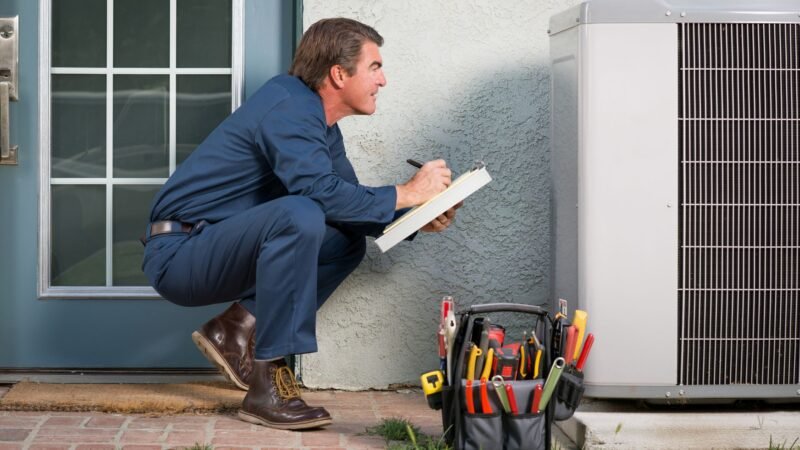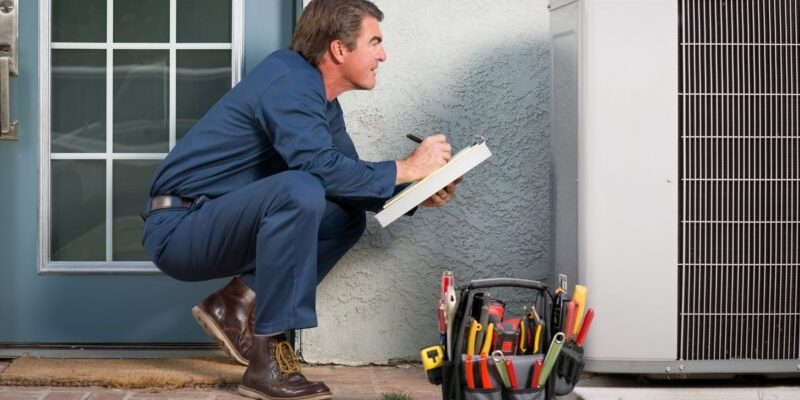
Maybe you got caught up in the excitement of finally having climate control that actually works. Maybe the installer handed you a stack of manuals, and you forgot about the fine print in the rush to feel that first cool breeze. If you’re googling what to do now, you’re in good company—this happens to more people than you’d think. Carrier makes solid HVAC systems, and their warranty is one of the perks, but the registration process (especially that 90-day clock) can trip people up. Let’s walk through what happens next and how you can still take smart steps to protect your system.
What Does Registering Your Carrier HVAC System Actually Do?
Let me explain what’s at stake. When you buy a Carrier HVAC system—like a new furnace or air conditioner—you’re essentially getting two warranties. There’s the *basic* warranty that comes with every unit, covering key parts for a set period (usually 5 years). But Carrier offers an *extended* warranty, bumping that coverage to 10 years on specific parts, *if* you register the system within 90 days of installation.
Why do they do this? It’s not just to give customers homework. Registering your unit lets Carrier officially tie the system—by model and serial number—to you. That way, if you run into troubleshooting issues, need a code for repairs, or want to reset or sync your remote, they can verify your unit’s details quickly. It also helps with notifications about recalls or important updates.
If you miss the registration deadline, you don’t lose all warranty protection, but you do drop to the standard limited warranty. That’s still something, but those extra years of coverage? Gone. So, it’s not just a “nice-to-have” step—registering can impact your peace of mind (and your wallet) down the road.
Missed the Deadline? Here’s What Actually Happens
Honestly, finding out you missed the Carrier registration window feels a little like leaving your phone out in the rain—regret meets reality. But let’s break down what changes, and what doesn’t. You aren’t suddenly left with zero support, but the difference is worth understanding.
- 5-Year Limited Warranty: This is automatic, and it sticks around. You’ll still get parts replaced if something fails due to a manufacturing defect—but only for five years from installation, not ten.
- No Extended Coverage: The 10-year extended warranty is tied to timely registration. Without it, those extra five years of “just in case” evaporate.
- Proof of Installation: Sometimes, Carrier or your installer might ask for proof of the original installation date (an invoice, contract, or service code). Keep those handy!
- Labor Not Included: Either way, the warranty almost never covers labor—so plan for that cost if repairs come up, especially outside those first five years.
Imagine calling Carrier support to troubleshoot a remote or reset your smart thermostat five years in, only to hear “sorry, your warranty ended last month.” That’s the risk of skipping or missing the registration step, but it’s not a total dead end. There are ways to patch things up or work around common issues.
Can You Register Late or Appeal to Carrier?
You might be wondering: “What if I just try to register my Carrier HVAC system anyway? Maybe no one’s keeping track?” Here’s the honest answer—you can try, but there aren’t any guarantees. Carrier is known for sticking to that 90-day policy, and the system will usually verify installation dates with your installer records. Late registrations often get flagged or denied for the extended warranty.
That said, it’s not always black-and-white. If you’ve got a really good reason—like the installer delayed providing your serial number, or there was a mix-up in communication—it doesn’t hurt to call Carrier customer service. You’ll need:
- Your system’s model and serial number
- Proof of installation date (invoice, signed contract, etc.)
- Any correspondence from your dealer or installer that explains the delay
Explain your situation—kindly, and with details. Sometimes, they’ll make a one-time exception for unique cases, especially if a registered Carrier technician installed your system and can vouch for your timeline.
Pro Tip: If you used a credit card or digital wallet for the purchase, those statements can help establish your installation date if documents are missing.
If Carrier says no? Don’t lose hope just yet. There might still be ways to secure protection.
Alternative Protection Plans and What’s Still Covered
Missing the Carrier registration doesn’t have to mean flying without a safety net. There are other ways to safeguard your HVAC investment, even if they aren’t quite as robust as the original warranty extension.
First, you may be able to buy a third-party home warranty plan. These plans typically cover major systems (like HVACs)—sometimes including labor—regardless of brand or original registration status. Always read the fine print! Some plans have a short waiting period or require a quick inspection to confirm your system still runs properly.
Second, check with your home insurance. While standard policies usually don’t cover equipment failure, some providers offer *equipment breakdown coverage* as an extra. This won’t work for maintenance issues or things like dead batteries in your remote, but it’s good for big malfunctions.
Lastly, don’t underestimate the value of annual maintenance contracts from local HVAC pros. These contracts might not reset your warranty or extend official coverage, but they do help keep your equipment in top shape (and some companies even provide service credits or small discounts on repairs).
Hint: Even with a lapsed Carrier registration, you can often get troubleshooting help, basic support, and advice on how to pair remotes, sync thermostats, or reset system codes—just without the free parts or covered fixes.
What About Universal vs. Brand-Specific Remotes and Components?
While we’re on the subject, let’s talk about another common headache: remotes and controls. Maybe your Carrier thermostat remote starts acting up, or you need to sync a new one. Does missing registration impact your ability to use a universal remote or replace components?
Here’s what you need to know:
- Universal Remotes: These can be paired to most modern Carrier HVAC systems, even if you never registered. Pairing usually involves a simple code or reset process—check your manual or look up your model online.
- OEM (Original Equipment Manufacturer) Remotes: Direct replacements from Carrier are sometimes only available to registered users, or may cost more out of pocket if you’re outside warranty. If you can’t get one from Carrier, try reputable HVAC suppliers.
- Programming Issues: Registration status doesn’t affect your ability to troubleshoot or reset the remote’s code for syncing with your unit. But if you run into advanced setup problems, Carrier tech support might ask for your serial number to confirm eligibility for deeper diagnostics.
Honestly, most day-to-day remote, battery, or pairing issues aren’t tied to warranty coverage anyway. So don’t stress if you need to replace a part or call in a pro for a quick fix.
Keeping Your Carrier HVAC Healthy Without the Extra Warranty
Okay, so you’ve lost those bonus warranty years. Now what? Think of your HVAC like a car with no extended coverage—it pays to treat it kindly and catch problems early.
Here’s how to stay ahead of breakdowns and keep your system humming:
- Schedule Annual Tune-Ups: Regular service keeps things running efficiently and can catch minor issues (like weird noises or error codes) before they turn into big, expensive problems.
- Change Filters Regularly: Clogged filters stress your system and lower air quality. Mark your calendar to swap them out every few months.
- Look Out for Oddities: If your system isn’t syncing, the thermostat remote loses connection, or you spot a repeated error code, don’t ignore it. The sooner you troubleshoot, the cheaper the fix.
- Document Everything: Keep records of services, codes, battery swaps, and any troubleshooting you’ve done. These notes can help a technician diagnose issues faster.
Remember: Just because you missed Carrier registration doesn’t mean you can’t be proactive about care. A well-maintained system can run smoothly for well beyond its formal warranty period.
Tips to Avoid Missing Registration in the Future
If you’re reading this before installing a new Carrier HVAC system—or just want to help a forgetful friend—here are a few simple ways to avoid this hassle next time.
- Register Immediately: As soon as your installer leaves, grab your phone or computer and go to the Carrier website with your model and serial number handy. Don’t let it sit on your to-do list.
- Ask Your Installer for Help: Many reputable dealers will register the system for you or walk you through the online registration process before they leave.
- Set a Reminder: If you can’t register right away, set a digital reminder for a week out—don’t wait for the 90-day window to slip by.
- Keep Documentation Safe: Store your warranty, receipt, and any codes or remote pairing information in one place. Snap photos for easy backup.
Honestly, those few minutes up front can save you hundreds—or even thousands—over your system’s lifespan.
Final Thoughts: Missed Registration Isn’t the End of the World
Missing the deadline to register your Carrier HVAC system might sting at first, but it’s not a disaster. You still have the basic warranty, and there are plenty of ways to protect your investment—from third-party plans to routine maintenance and smart troubleshooting. Carrier makes reliable equipment, and most issues can be managed even without the bonus warranty as long as you stay on top of care.
If you find yourself in this boat, take a breath and gather your documentation. Call Carrier if you think you have a case for late registration. And going forward, treat your system kindly, keep good records, and know that a little attention now can save you headaches later. Whether it’s pairing a new remote, changing a battery, or handling an unexpected code, staying informed puts you in control—even without that coveted registration.
